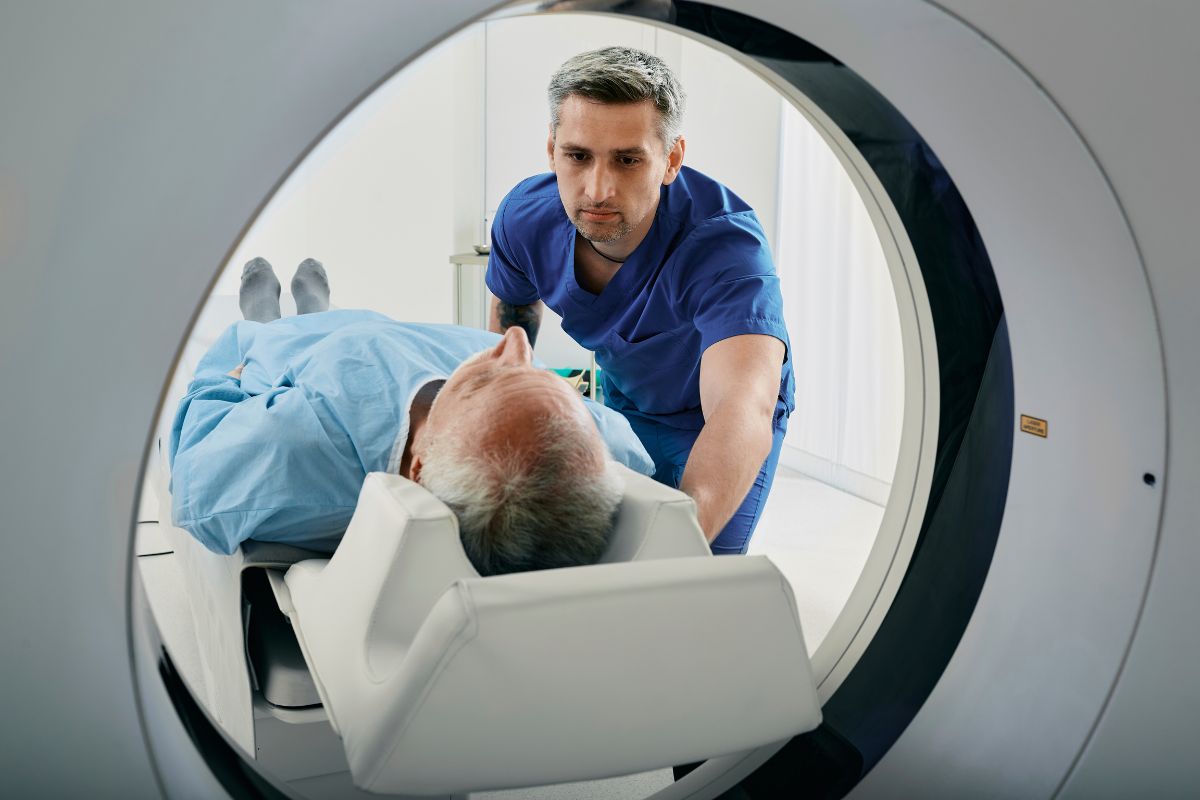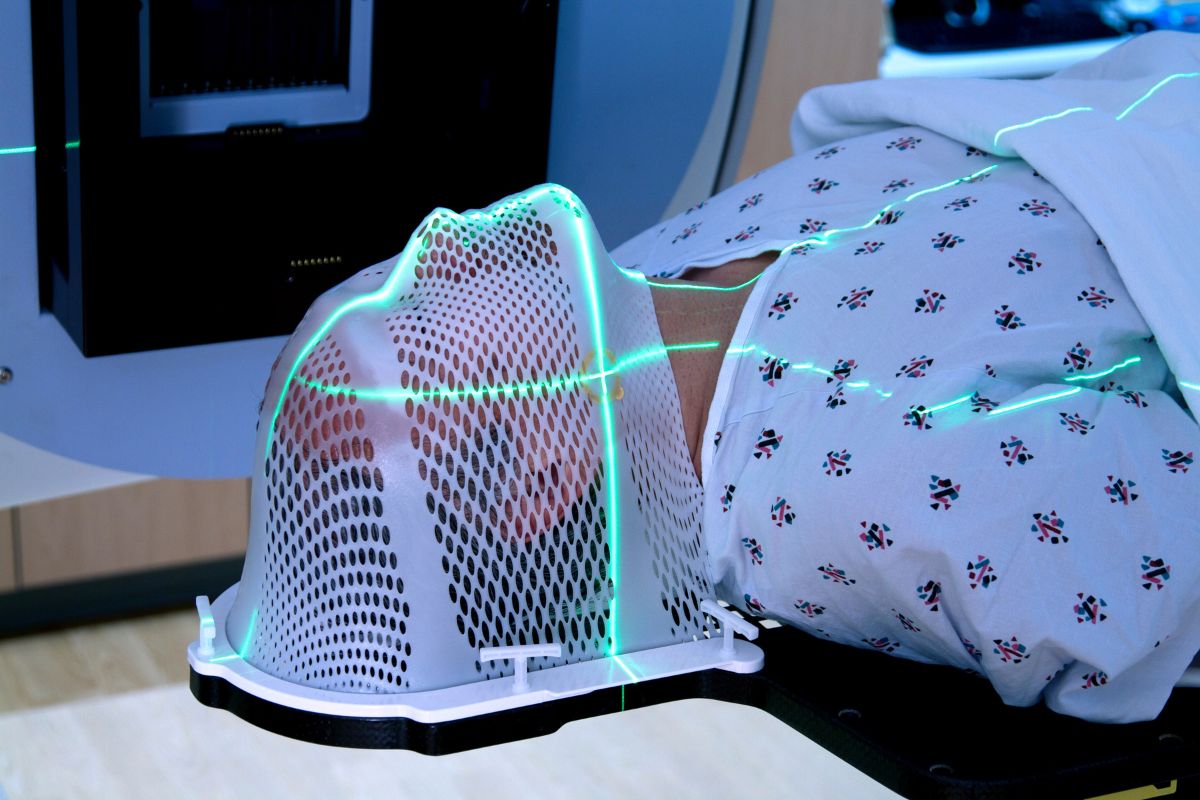
Introduction to Diagnostic Imaging and Therapy
The field of Diagnostic Imaging and Therapy has undergone a remarkable transformation over the past few decades, becoming an integral part of modern healthcare. By enabling the early detection, precise diagnosis, and targeted treatment of various diseases, these technologies have improved patient outcomes and reduced the burden on healthcare systems worldwide. This article delves into the evolution, current state, and future prospects of Diagnostic Imaging and Therapy, while also exploring the role of the Radiopharmaceuticals Industry in advancing these technologies.
The Evolution of Diagnostic Imaging and Therapy

Diagnostic Imaging and Therapy began with the discovery of X-rays in 1895 by Wilhelm Conrad Roentgen. This ground-breaking discovery paved the way for the development of various imaging modalities, including computed tomography (CT), magnetic resonance imaging (MRI), ultrasound, and positron emission tomography (PET). Each of these technologies has brought unique advantages, enabling clinicians to visualize the internal structures of the human body with unprecedented clarity and accuracy.
- X-rays and CT Scans: X-rays were the first form of Diagnostic Imaging and Therapy and remain a cornerstone of medical diagnostics. CT scans, which use X-rays to create detailed cross-sectional images, revolutionized the field by allowing for the visualization of soft tissues, bones, and blood vessels. CT scans are particularly valuable in detecting cancers, cardiovascular diseases, and trauma injuries.
- MRI: MRI technology, which uses strong magnetic fields and radio waves to produce detailed images, has become indispensable in diagnosing neurological disorders, musculoskeletal conditions, and certain cancers. Its ability to provide high-resolution images without ionizing radiation has made MRI a preferred choice for many patients.
- Ultrasound: Ultrasound imaging, which uses high-frequency sound waves to create images, is widely used in obstetrics, cardiology, and musculoskeletal imaging. Its non-invasive nature and real-time imaging capabilities have made it a valuable tool in monitoring fetal development, diagnosing heart conditions, and guiding minimally invasive procedures.
- PET Scans and the Radiopharmaceuticals Industry: PET scans, which utilize radiopharmaceuticals to detect metabolic activity within the body, have revolutionized the diagnosis and staging of cancer, neurological disorders, and cardiovascular diseases. The Radiopharmaceuticals Industry has played a crucial role in the development of PET imaging agents, enabling the detection of diseases at the molecular level.
The Role of Radiopharmaceuticals in Diagnostic Imaging
The Radiopharmaceuticals Industry is a key player in the advancement of Diagnostic Imaging and Therapy. Radiopharmaceuticals are radioactive compounds used in both diagnostic and therapeutic applications. In diagnostic imaging, these compounds are introduced into the body, where they emit radiation that can be detected by imaging devices such as PET and SPECT (single-photon emission computed tomography) scanners.
Radiopharmaceuticals offer several advantages in Diagnostic Imaging and Therapy:
- Targeted Imaging: Radiopharmaceuticals can be designed to target specific organs, tissues, or cellular processes, allowing for highly specific imaging. For example, fluorodeoxyglucose (FDG), a glucose analog, is commonly used in PET scans to identify cancerous cells, which have a higher metabolic rate than normal cells.
- Early Detection: By targeting molecular processes, radiopharmaceuticals enable the detection of diseases at an earlier stage, often before structural changes become apparent on conventional imaging modalities. This early detection is critical in improving patient outcomes, particularly in cancer and cardiovascular diseases.
- Theranostics: The concept of theranostics combines diagnostic and therapeutic capabilities into a single radiopharmaceutical. These agents can be used to diagnose a condition and then deliver targeted therapy, such as in the case of radioactive iodine treatment for thyroid cancer. The Radiopharmaceuticals Industry is at the forefront of developing these innovative agents, which hold promise for personalized medicine.
Advances in Therapeutic Imaging

The intersection of Diagnostic Imaging and Therapy has led to the development of advanced therapeutic techniques that leverage imaging technologies for more precise and effective treatments. Some of the most notable advances include:
- Image-Guided Surgery: Imaging technologies such as MRI, CT, and ultrasound are increasingly being used in real-time during surgical procedures to guide surgeons with greater precision. This approach minimizes damage to healthy tissues and improves surgical outcomes. For instance, MRI-guided brain surgery allows neurosurgeons to target tumors with millimeter accuracy, reducing the risk of complications.
- Radiotherapy: Radiotherapy, which uses high-energy radiation to destroy cancer cells, has benefited significantly from advances in imaging. Techniques such as intensity-modulated radiotherapy (IMRT) and stereotactic body radiotherapy (SBRT) rely on imaging to deliver precise doses of radiation to tumors while sparing surrounding healthy tissues. The integration of Diagnostic Imaging and therapy with radiotherapy has improved treatment outcomes and reduced side effects.
- Interventional Radiology: Interventional radiology involves the use of imaging techniques to guide minimally invasive procedures, such as angioplasty, embolization, and ablation. These procedures are often used to treat conditions such as vascular diseases, tumors, and chronic pain. The use of real-time imaging ensures that treatments are delivered accurately, reducing the need for open surgery and shortening recovery times.
- Molecular Imaging and Targeted Therapy: Molecular imaging, which involves the visualization of biological processes at the molecular level, is playing an increasingly important role in the development of targeted therapies. By identifying specific molecular targets, clinicians can design therapies that selectively target diseased cells while minimizing harm to healthy tissues. The Radiopharmaceuticals Industry is actively involved in developing imaging agents and therapies that can be used together for more effective treatment.
The Future of Diagnostic Imaging and Therapy

As Diagnostic Imaging and Therapy continue to evolve, several trends and innovations are shaping the future of this field:
- Artificial Intelligence (AI) and Machine Learning: AI and machine learning are poised to revolutionize Diagnostic Imaging by enabling faster, more accurate image analysis. These technologies can assist radiologists in detecting subtle abnormalities, predicting disease progression, and personalizing treatment plans. AI algorithms are also being developed to automate routine imaging tasks, freeing up clinicians to focus on more complex cases.
- Hybrid Imaging Modalities: The integration of multiple imaging modalities into a single system, known as hybrid imaging, is becoming increasingly common. For example, PET/CT and PET/MRI scanners combine the strengths of each modality, providing detailed anatomical and functional information in a single scan. Hybrid imaging is particularly valuable in oncology, where it can improve the accuracy of tumor detection, staging, and treatment monitoring.
- Theranostics and Personalized Medicine: The future of Diagnostic Imaging and Therapy lies in the continued development of theranostic agents that combine diagnostic and therapeutic functions. Personalized medicine, which tailors treatments to the individual characteristics of each patient, will benefit from these advances, leading to more effective and less toxic therapies. The Radiopharmaceuticals Industry is expected to play a central role in bringing these innovations to market.
- Portable and Point-of-Care Imaging: Advances in technology are making it possible to develop portable imaging devices that can be used at the point of care, such as in emergency rooms, intensive care units, and remote settings. These devices can provide immediate diagnostic information, enabling timely interventions and improving patient outcomes.
- Regenerative Medicine and Imaging: The emerging field of regenerative medicine, which focuses on repairing or replacing damaged tissues and organs, will likely benefit from advances in imaging technologies. Imaging will be crucial in monitoring the progress of regenerative therapies, such as stem cell treatments, and ensuring that they are delivered to the correct location in the body.
The Impact of the Radiopharmaceuticals Industry
The Radiopharmaceuticals Industry has had a profound impact on the development of Diagnostic Imaging and Therapy. By providing innovative imaging agents and therapeutic radiopharmaceuticals, the industry has enabled the early detection and treatment of a wide range of diseases. The industry’s contributions have been particularly significant in oncology, where radiopharmaceuticals have improved the accuracy of cancer diagnosis and facilitated the development of targeted therapies.
As the demand for precision medicine continues to grow, the Radiopharmaceuticals Industry is expected to play an increasingly important role in healthcare. The development of new radiopharmaceuticals for both diagnostic and therapeutic purposes will be crucial in advancing the field of Diagnostic Imaging and Therapy. Moreover, collaborations between the Radiopharmaceuticals Industry, academic institutions, and healthcare providers will be essential in bringing these innovations to patients.
Conclusion
Diagnostic Imaging and Therapy have transformed the landscape of modern healthcare, enabling earlier and more accurate diagnosis, as well as more effective and targeted treatments. The Radiopharmaceuticals Industry has been instrumental in driving these advancements, particularly in the development of molecular imaging agents and theranostic compounds. As technology continues to evolve, the future of Diagnostic Imaging and Therapy holds even greater promise, with innovations in AI, hybrid imaging, and personalized medicine set to revolutionize the field. By staying at the forefront of these developments, healthcare providers can continue to improve patient outcomes and enhance the quality of care.





Comments